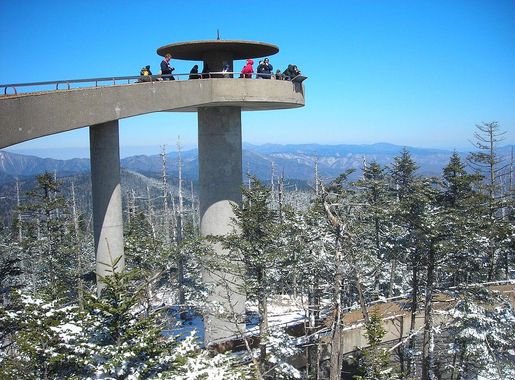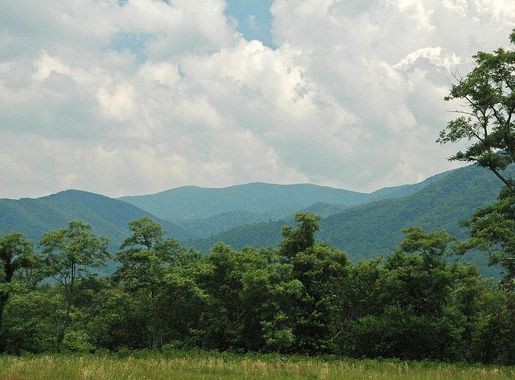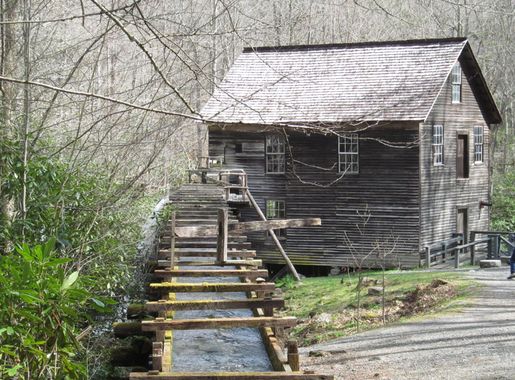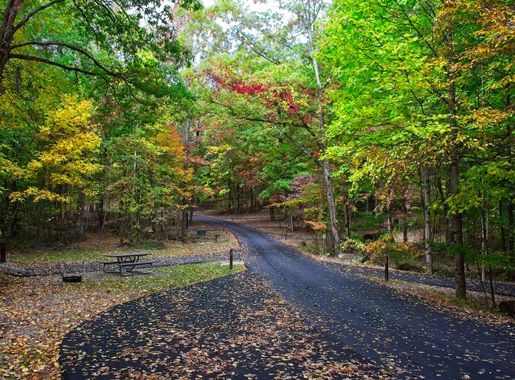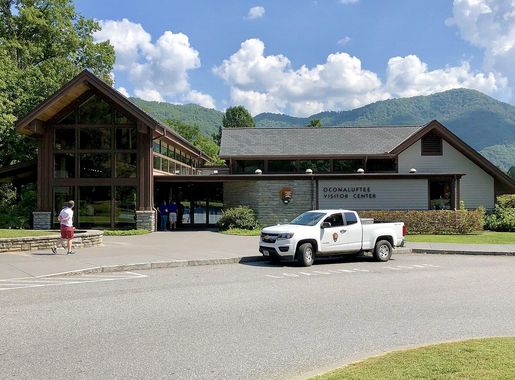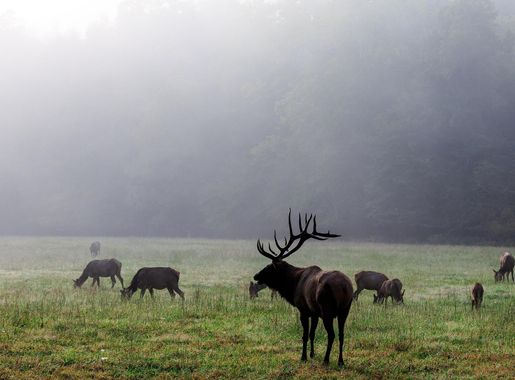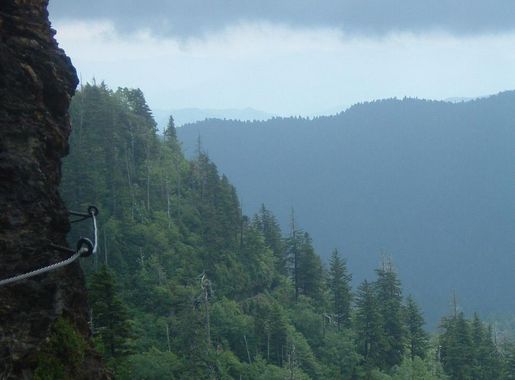
The Enchanting Wonders of the Great Smoky Mountains
Discover the Great Smoky Mountains in North Carolina: A haven of misty peaks, diverse wildlife, and rich cultural heritage. Perfect for nature lovers and adventure seekers.
Nestled between North Carolina and Tennessee, the Great Smoky Mountains offer a breathtaking escape into nature. Renowned for their mist-covered peaks, these mountains are part of the Appalachian chain and are home to a rich diversity of flora and fauna. As you explore the lush forests, you'll find over 1,500 species of flowering plants, making it a paradise for nature lovers. The Great Smoky Mountains National Park, a UNESCO World Heritage Site, is one of the most visited national parks in the United States. The park offers a variety of activities, from hiking along scenic trails to camping under the stars. Clingmans Dome, the highest peak in the park, provides panoramic views that are simply stunning. The park also has a wealth of history, with preserved log cabins and historic buildings that tell the story of early settlers. Waterfalls, such as Laurel Falls and Grotto Falls, add to the charm of this majestic area. Wildlife enthusiasts can catch glimpses of black bears, white-tailed deer, and a variety of bird species. For those interested in cultural experiences, nearby towns like Cherokee offer insights into the heritage of the Cherokee Nation, with museums, galleries, and traditional crafts.
Local tips in Great Smoky Mountains
- Visit early in the morning or late in the afternoon to avoid crowds, especially during peak seasons.
- Wear sturdy hiking boots and bring plenty of water, as some trails can be challenging.
- Check the weather forecast before your trip, as conditions can change rapidly in the mountains.
- Carry a map and familiarize yourself with trail markers, as cellphone reception can be unreliable.
- Don't miss the local crafts and artwork in nearby towns like Gatlinburg and Cherokee.
The Enchanting Wonders of the Great Smoky Mountains
Nestled between North Carolina and Tennessee, the Great Smoky Mountains offer a breathtaking escape into nature. Renowned for their mist-covered peaks, these mountains are part of the Appalachian chain and are home to a rich diversity of flora and fauna. As you explore the lush forests, you'll find over 1,500 species of flowering plants, making it a paradise for nature lovers. The Great Smoky Mountains National Park, a UNESCO World Heritage Site, is one of the most visited national parks in the United States. The park offers a variety of activities, from hiking along scenic trails to camping under the stars. Clingmans Dome, the highest peak in the park, provides panoramic views that are simply stunning. The park also has a wealth of history, with preserved log cabins and historic buildings that tell the story of early settlers. Waterfalls, such as Laurel Falls and Grotto Falls, add to the charm of this majestic area. Wildlife enthusiasts can catch glimpses of black bears, white-tailed deer, and a variety of bird species. For those interested in cultural experiences, nearby towns like Cherokee offer insights into the heritage of the Cherokee Nation, with museums, galleries, and traditional crafts.
When is the best time to go to Great Smoky Mountains?
Iconic landmarks you can’t miss
Great Smoky Mountains National Park
Explore the breathtaking beauty and diverse wildlife of Great Smoky Mountains National Park, a UNESCO World Heritage Site and outdoor paradise.
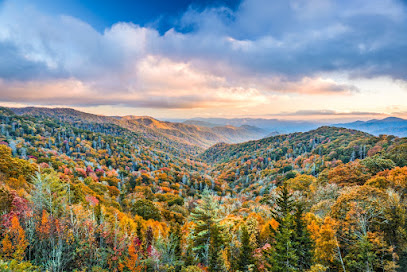
Chimney Rock State Park
Explore the stunning landscapes of Chimney Rock State Park, where adventure meets breathtaking natural beauty in North Carolina's iconic outdoor paradise.
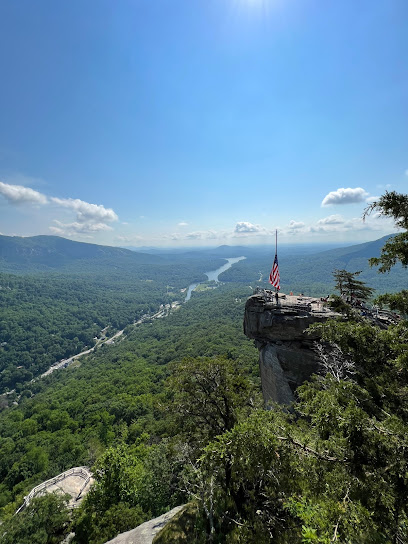
Chimney Rock at Chimney Rock State Park
Explore Chimney Rock at Chimney Rock State Park - a breathtaking natural wonder with stunning views and exhilarating hiking trails in North Carolina.
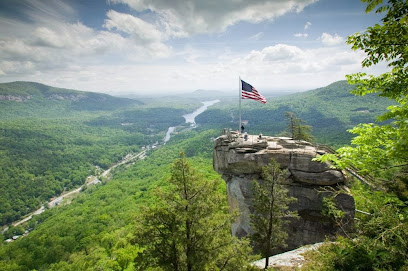
Oconaluftee Visitor Center
Experience the Great Smoky Mountains at Oconaluftee Visitor Center, your gateway to nature, culture, and adventure.

Great Smoky Mountains Railroad
Experience the breathtaking beauty of the Great Smoky Mountains with scenic train rides through stunning landscapes and rich history.
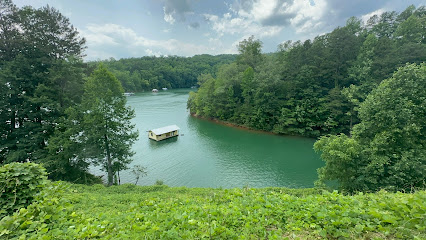
Newfound Gap
Discover the stunning vistas and rich biodiversity at Newfound Gap, a breathtaking mountain pass in the Great Smoky Mountains National Park.
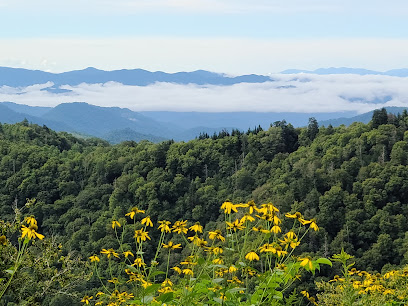
Tuckaleechee Caverns
Explore the breathtaking Tuckaleechee Caverns in the Great Smoky Mountains, where stunning geological formations and enchanting underground rivers await.
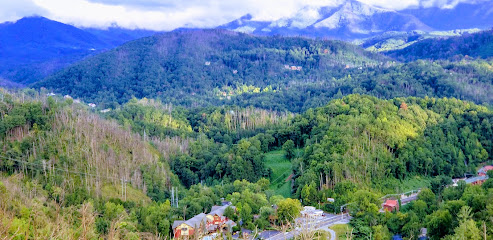
Oconaluftee Island Park
Experience nature's beauty and Cherokee culture at Oconaluftee Island Park, a serene escape in the Smoky Mountains.
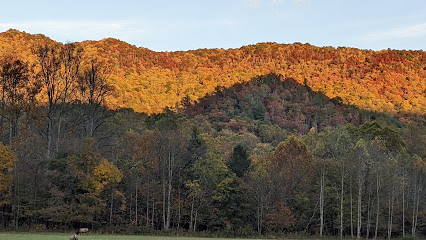
Clingmans Dome
Discover breathtaking views and natural beauty at Clingmans Dome, the highest point in the Great Smoky Mountains National Park.

The Sinks
Discover The Sinks, a stunning waterfall in the Smoky Mountains, perfect for hiking, photography, and unwinding in nature's beauty.
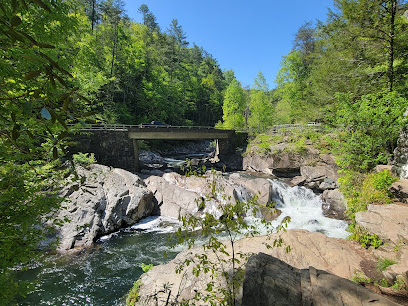
Mingo Falls
Discover the breathtaking beauty of Mingo Falls in the Smoky Mountains – a stunning 120-foot waterfall surrounded by lush nature.
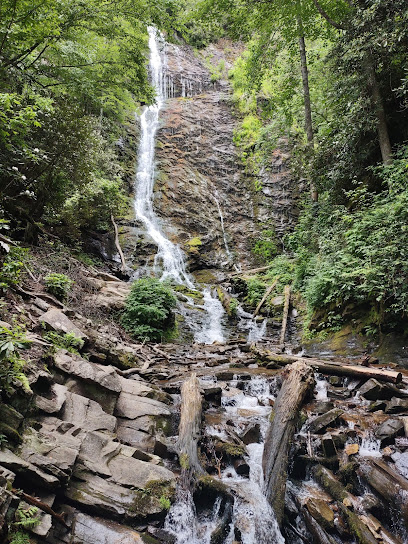
Gatlinburg Space Needle
Discover breathtaking views of the Great Smoky Mountains at Gatlinburg Space Needle, a must-see attraction in the heart of Tennessee.

Great Smoky Mountains Railroad Depot
Experience the scenic beauty of the Smokies aboard the Great Smoky Mountains Railroad Depot, a historic attraction in Bryson City, NC.
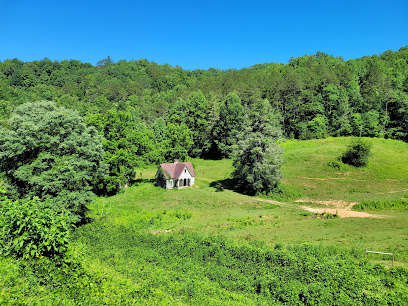
Cherokee North Carolina
Explore Cherokee, NC: A unique blend of Native American culture and stunning natural beauty in the heart of the Smoky Mountains.

Clingmans Dome Trailhead
Explore Clingmans Dome, the highest point in the Smokies, and revel in stunning views and invigorating hikes in North Carolina.
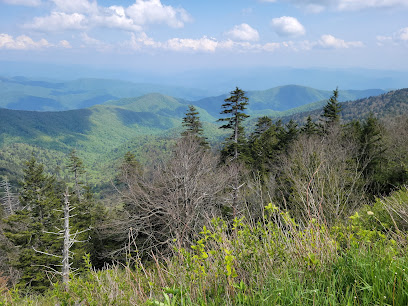
Unmissable attractions to see
Oconaluftee Visitor Center
Explore the Oconaluftee Visitor Center for an enriching start to your Great Smoky Mountains adventure, featuring exhibits, trails, and stunning views.
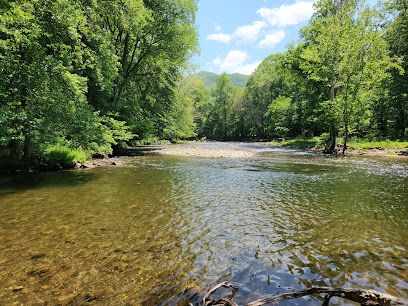
CLIMB Works Smoky Mountains - Zipline Tour
Experience the thrill of ziplining through the breathtaking Smoky Mountains at CLIMB Works, where adventure meets stunning natural beauty.
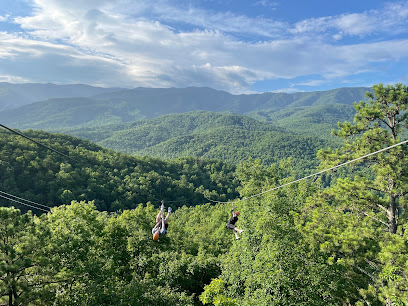
Bush's Visitor Center
Explore the delicious history of Bush's Beans at Bush's Visitor Center, where interactive exhibits, tasty meals, and unique gifts await in Dandridge, TN.
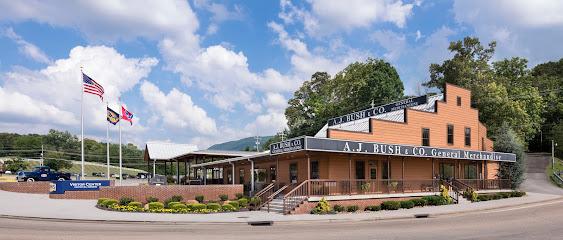
TopJump Trampoline & Extreme Arena
Experience the thrill of bouncing and adventure at TopJump Trampoline & Extreme Arena, Pigeon Forge's ultimate amusement destination for all ages.

Soco Falls
Explore the enchanting beauty of Soco Falls in Maggie Valley, NC, where cascading waterfalls and lush landscapes await your discovery.
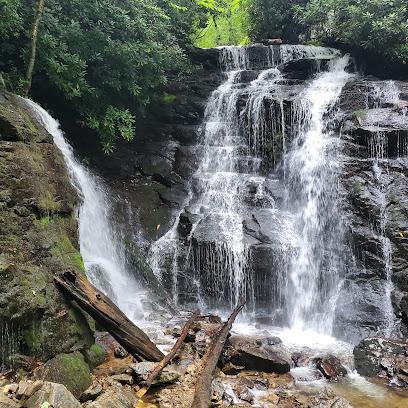
Mingo Falls
Experience the stunning Mingo Falls in Cherokee, NC - a majestic waterfall surrounded by lush nature and rich Cherokee heritage.
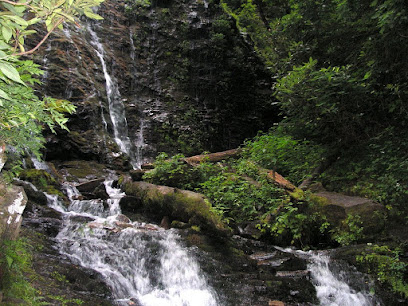
Great Smoky Mountains Railroad Depot
Experience the breathtaking beauty and rich history of the Great Smoky Mountains Railroad Depot in Bryson City, North Carolina.

Dolly Parton Statue
Discover the Dolly Parton Statue in Sevierville, TN - a captivating tribute to the country music legend amidst the beauty of the Smoky Mountains.
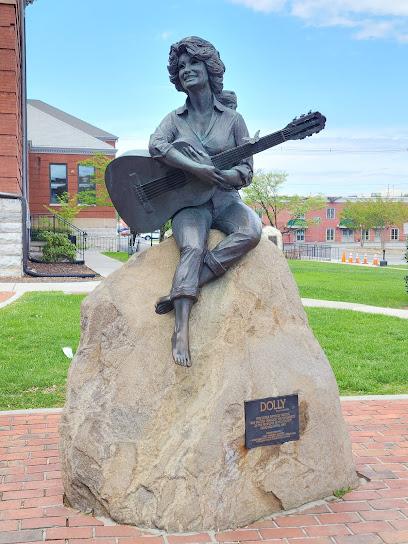
Mingus Mill
Explore the historic Mingus Mill in the Great Smoky Mountains, where history, nature, and traditional milling come together in a scenic paradise.
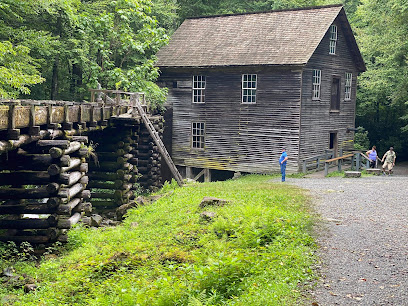
Sevierville Convention Center
Discover the Sevierville Convention Center, a premier venue for events in the heart of Tennessee, surrounded by natural beauty and local attractions.

Deep Creek Trail Trailhead
Discover the breathtaking beauty of Deep Creek Trailhead in the Great Smoky Mountains – a hiker's paradise with stunning waterfalls and rich wildlife.
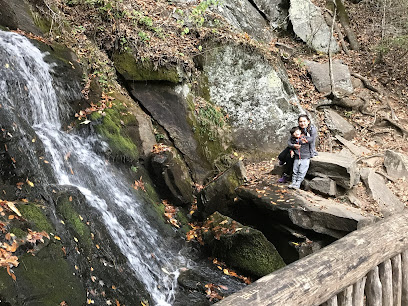
The Mountain Mile
Explore The Mountain Mile in Pigeon Forge for an unforgettable experience of shopping, dining, and thrilling rides in the heart of the Smoky Mountains.
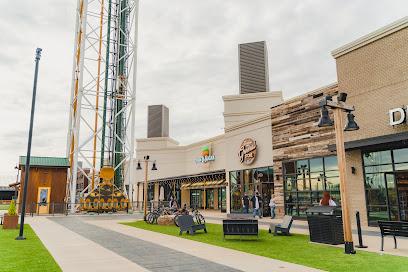
Great Smoky Arts & Crafts Community
Explore the vibrant Great Smoky Arts & Crafts Community in Gatlinburg, where local artisans create breathtaking works amidst stunning mountain scenery.

Harrisburg Covered Bridge
Explore the historic Harrisburg Covered Bridge in Sevierville, Tennessee, a scenic gem perfect for photography and a peaceful retreat into nature.
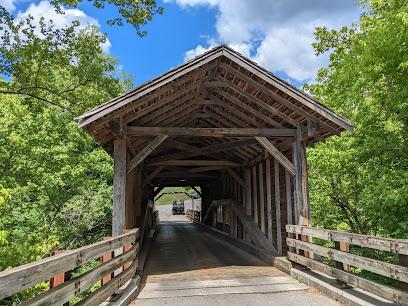
Cherokee Welcome Center
Discover the heart of Cherokee at the Welcome Center, where rich culture meets adventure in the beautiful Smoky Mountains.
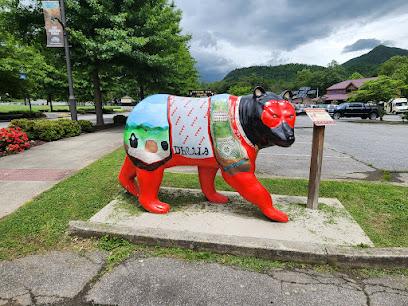
Essential places to dine
Crockett's Breakfast Camp
Indulge in hearty Southern breakfasts at Crockett's Breakfast Camp in Gatlinburg - A must-visit culinary gem nestled in the Smoky Mountains.

Bubba Gump Shrimp Co.
Experience vibrant flavors and fun-filled dining at Bubba Gump Shrimp Co., where seafood meets cinematic charm in Gatlinburg.
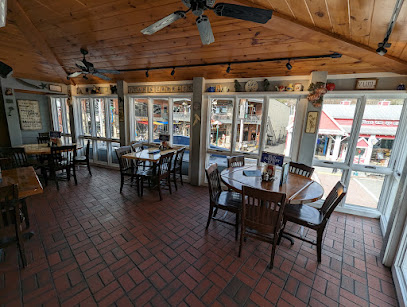
The Peddler Steakhouse
Discover unparalleled dining at The Peddler Steakhouse in Gatlinburg - where delicious steaks meet breathtaking river views.
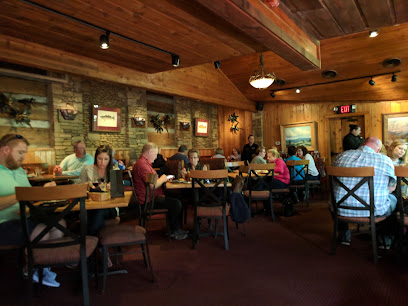
Calhoun's in Gatlinburg
Experience authentic Southern barbecue at Calhoun's in Gatlinburg - where smoky flavors meet hearty portions amidst stunning mountain views.
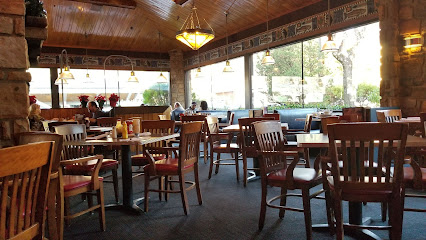
Granny's Kitchen
Discover delicious comfort food at Granny's Kitchen in Cherokee – a must-visit buffet restaurant offering hearty American dishes for all appetites.
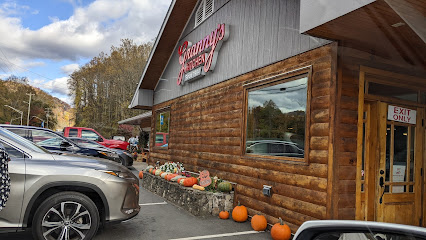
Cherokee Grill and Steakhouse
Discover culinary excellence at Cherokee Grill and Steakhouse in Gatlinburg—where every steak tells a story amidst breathtaking mountain views.
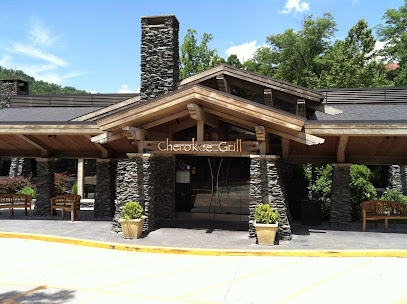
The Park Grill
Experience delightful American cuisine at The Park Grill in Gatlinburg, perfect for families and nature lovers exploring the Smoky Mountains.

Apple Valley Mountain Village & Cafe
Discover Apple Valley Mountain Village & Cafe: Where Delicious Food Meets Unique Local Crafts and Live Music in Townsend, TN.

Best Italian Cafe & Pizzeria in Elks Plaza
Experience authentic Italian cuisine at Best Italian Cafe & Pizzeria in Gatlinburg—where every meal feels like a trip to Italy.
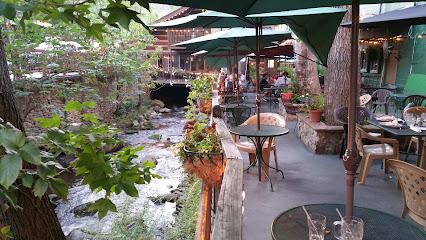
Smoky Mountain Brewery in Gatlinburg
Discover handcrafted beers and delicious American cuisine at Smoky Mountain Brewery in Gatlinburg - a perfect blend for craft beer lovers.
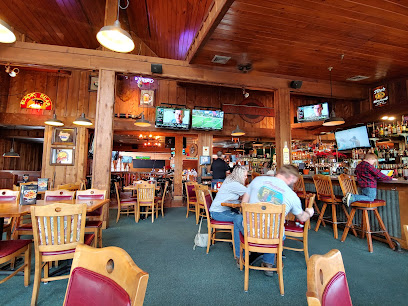
Burg Steakhouse
Experience exceptional steaks and delightful buffets at Burg Steakhouse in Gatlinburg – where flavor meets comfort.
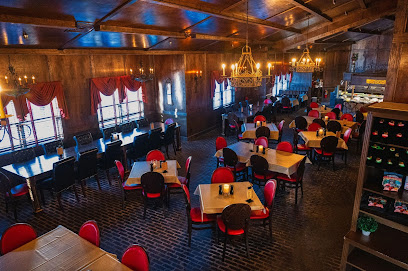
River's End Restaurant
Experience delightful American cuisine with stunning river views at River's End Restaurant in Bryson City.
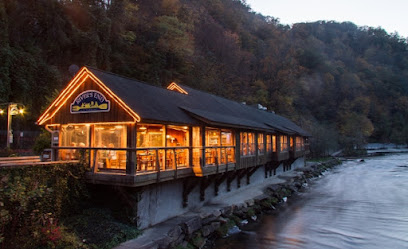
Cliff Top Restaurant at Anakeesta
Experience unforgettable dining at Cliff Top Restaurant with stunning mountain views and delicious American cuisine in Gatlinburg.
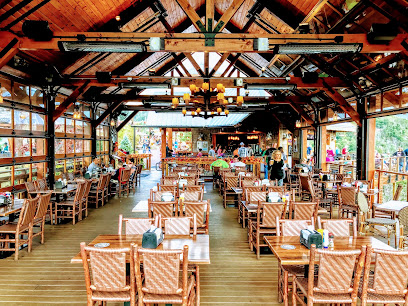
Ruth's Chris Steak House
Experience the ultimate fine dining at Ruth's Chris Steak House in Cherokee with sizzling steaks and exquisite seafood amidst elegant surroundings.

Smoky Mountain Trout House
Discover delightful seafood dining at Smoky Mountain Trout House in Gatlinburg – where local flavors meet mountain hospitality.
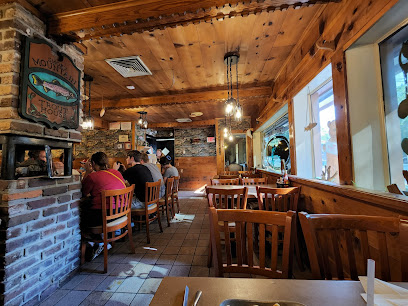
Markets, malls and hidden boutiques
Three Bears General Store
Explore the whimsical world of Three Bears General Store in Pigeon Forge, offering unique gifts, delicious treats, and family fun in a charming setting.
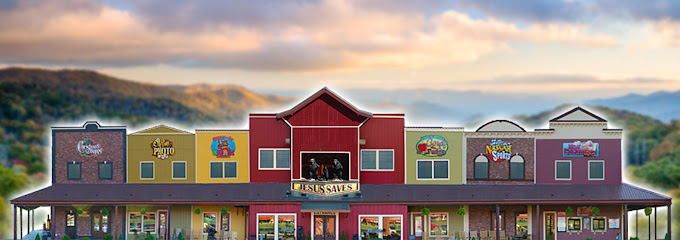
The Village Shops
Discover the charm of The Village Shops in Gatlinburg, a unique shopping mall full of local artisan shops and delicious eateries.
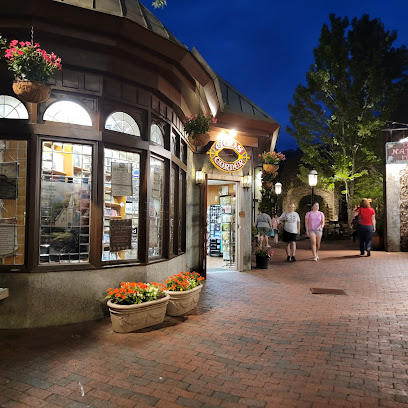
Mountain Mall
Explore Mountain Mall: Gatlinburg's eclectic shopping haven with unique shops and delicious dining options.
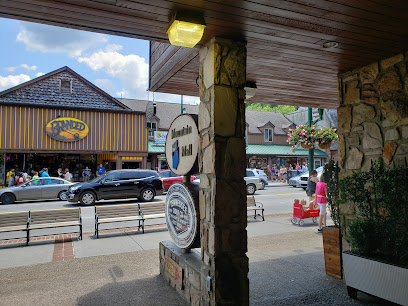
Great Smoky Mountains Railroad Retail Store & Train Museum
Discover the rich history of railroads at the Great Smoky Mountains Railroad Retail Store & Train Museum, where history meets unique gifts in a stunning mountain setting.
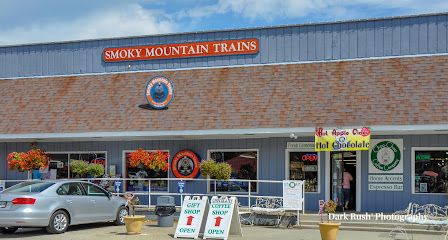
Celtic Heritage Co
Explore a treasure trove of Celtic-themed gifts at Celtic Heritage Co in Gatlinburg, TN, where culture meets charm for unforgettable souvenirs.
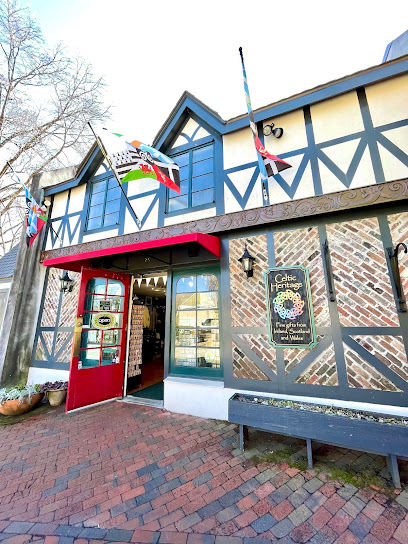
Country Barn Gift Shop & Photo Park
Explore the Country Barn Gift Shop & Photo Park for unique souvenirs and stunning photo opportunities in Pigeon Forge, Tennessee.
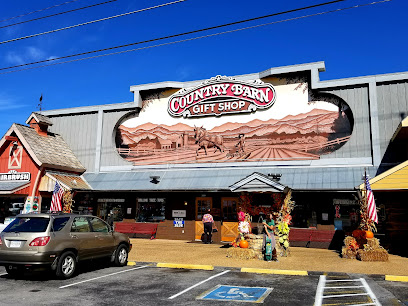
Happy Hippie Lane Lifestyle Gifts & THC
Discover the eclectic charm of Happy Hippie Lane, your go-to spot for unique clothing, jewelry, and metaphysical supplies in Gatlinburg, TN.

Unique Gifts & T’s of Pigeon Forge
Explore Unique Gifts & T’s in Pigeon Forge for locally inspired souvenirs and apparel that capture the Smoky Mountains' charm.

Ranger Bob's Trading Post
Explore Ranger Bob's Trading Post for unique gifts and local crafts amidst the beauty of Gatlinburg, TN.
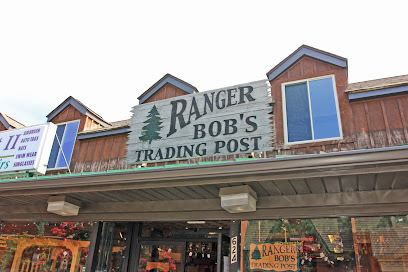
Lanier's General Store
Explore Lanier's General Store in Pigeon Forge, a delightful gift shop featuring unique local crafts and souvenirs from the Smoky Mountains.

Gifts For Memories
Explore Gatlinburg's favorite destination for toys, collectibles, and memorable souvenirs that celebrate the spirit of your adventure.

Tin Roof
Explore Tin Roof in Gatlinburg for unique gifts and local art that capture the spirit of the Smoky Mountains.
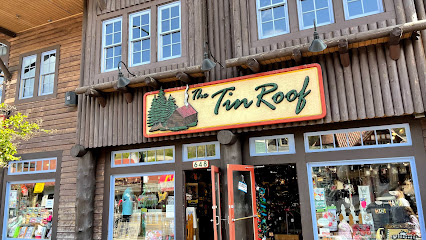
Loose Moose
Explore the whimsical world of Loose Moose Gift Shop in Bryson City, NC, where unique souvenirs and local artistry come together.
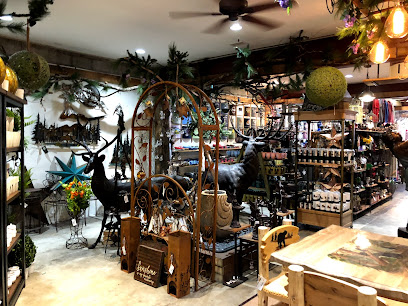
U Name It Gatlinburg
Explore U Name It Gatlinburg for unique gifts and local crafts, capturing the spirit of the Smoky Mountains in every treasure.
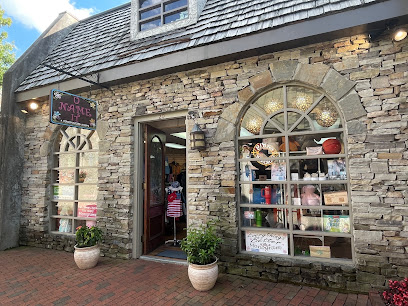
Mountain Cove Trading Post
Discover unique gifts and local crafts at Mountain Cove Trading Post, the heart of Pigeon Forge shopping.

Essential bars & hidden hideouts
Ole Red
Dive into Southern cuisine and live music at Ole Red, a vibrant hotspot in Gatlinburg for unforgettable entertainment and culinary delights.

Smith & Son Corner Kitchen
Discover Southern hospitality at Smith & Son Corner Kitchen, where delicious American cuisine meets a cozy atmosphere in Gatlinburg.

Smoky Mountain Brewery
Discover the rich flavors of craft beer and American cuisine at Smoky Mountain Brewery, a must-visit brewpub in Pigeon Forge, TN.

LandShark Bar & Grill
Experience the vibrant flavors of America at LandShark Bar & Grill in Gatlinburg, where great food meets a lively atmosphere.

TGI Fridays
Experience the lively atmosphere and delicious American cuisine at TGI Fridays in Gatlinburg, where good food meets great times.

Tom & Earl's Back Alley Grill
Savor delicious grilled dishes in a family-friendly atmosphere at Tom & Earl's Back Alley Grill in Gatlinburg, Tennessee.
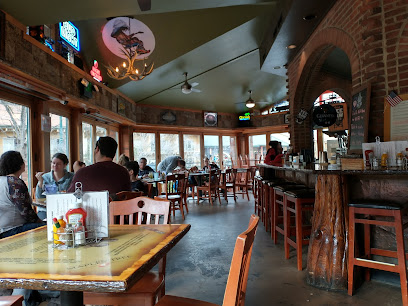
Smoky Mountain Brewery in Gatlinburg
Discover the flavors of Gatlinburg at Smoky Mountain Brewery, where craft beer meets delicious American cuisine in a cozy brewpub atmosphere.
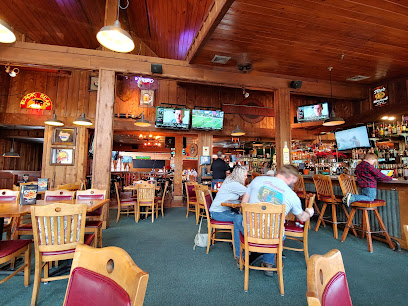
Native Brews Tap & Grill
Experience the best of Cherokee dining at Native Brews Tap & Grill, where local flavors and a relaxed atmosphere come together.

Boudicca's Celtic Pub
Experience the charm of Irish culture at Boudicca's Celtic Pub in Gatlinburg, where great food, drinks, and live entertainment await.
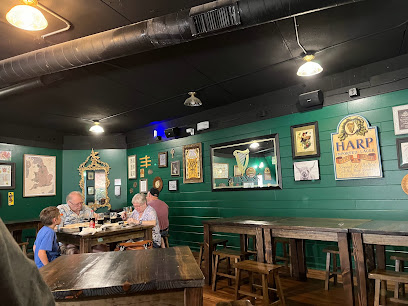
The Roaming Gnome Pub & Eatery
Discover the flavors of Sevierville at The Roaming Gnome Pub & Eatery, where great food and a welcoming atmosphere await every traveler.

Shamrock Pub
Discover the lively Shamrock Pub in Gatlinburg, where delicious food meets vibrant entertainment in a charming setting.
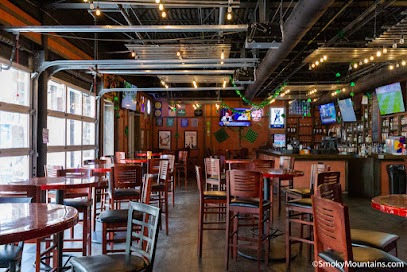
Jason Aldean's Kitchen & Rooftop Bar
Dive into the vibrant atmosphere of Jason Aldean's Kitchen & Rooftop Bar, where American cuisine meets stunning views in Gatlinburg, TN.
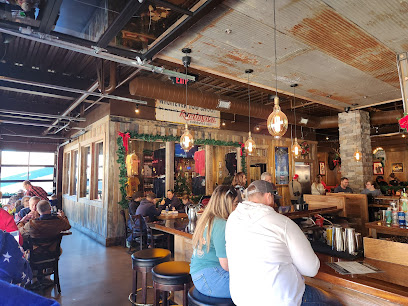
CJ's Grille
Experience the rich flavors of CJ's Grille in Bryson City, where delicious grilled cuisine meets the stunning backdrop of North Carolina's mountains.
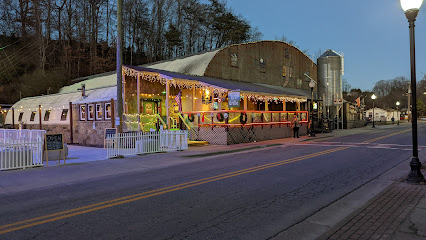
Daiquiri Shack & Grill Margaritaville
Experience the ultimate American dining with a tropical twist at Daiquiri Shack & Grill Margaritaville in Gatlinburg, TN.
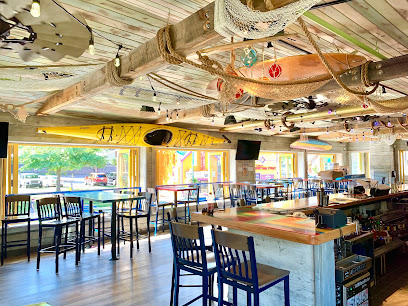
Iron Boar Saloon
Experience the perfect blend of sports, delicious Mexican cuisine, and vibrant atmosphere at Iron Boar Saloon in Pigeon Forge, Tennessee.
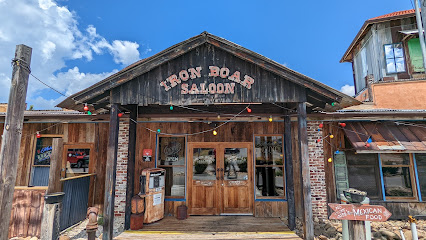
Local Phrases about Great Smoky Mountains
-
- HelloHowdy
[haw-dee] - GoodbyeSee ya later
[see yah lay-tur] - YesYup
[yuhp] - NoNaw
[naw] - Please/You're welcomePlease/You're welcome
[please/yur welcome] - Thank youThank ya
[thank yuh] - Excuse me/SorryPardon me
[pahr-dn me] - How are you?How y'all doin'?
[how y'all doin'] - Fine. And you?Fine. And you?
[fine. and yuh?] - Do you speak English?Ya speak English?
[yah speak ing-lish?] - I don't understandI don't reckon
[I don't rek-uhn]
- HelloHowdy
-
- I'd like to see the menu, pleaseI'd like to see the menu, please
[I'd like to see the menu, please] - I don't eat meatI don't eat meat
[I don't eat meat] - Cheers!Cheers!
[Cheers!] - I would like to pay, pleaseI would like to pay, please
[I would like to pay, please]
- I'd like to see the menu, pleaseI'd like to see the menu, please
-
- Help!Help!
[Help!] - Go away!Git!
[Git!] - Call the Police!Call the Sheriff!
[Call the Sheriff!] - Call a doctor!Call a doc!
[Call a doc!] - I'm lostI'm plumb lost
[I'm plumb lost] - I'm illI'm feelin' poorly
[I'm feelin' poorly]
- Help!Help!
-
- I'd like to buy...I reckon I'll buy...
[I rek-uhn ayl buy] - I'm just lookingI'm jest lookin'
[I'm jest look-in'] - How much is it?How much is it?
[How much is it?] - That's too expensiveThat's too pricey
[That's too pricey] - Can you lower the price?Can ya lower the price?
[Can yuh lower the price?]
- I'd like to buy...I reckon I'll buy...
-
- What time is it?What time is it?
[What time is it?] - It's one o'clockIt's one o'clock
[It's one o'clock] - Half past (10)Half past (10)
[Half past (10)] - MorningMornin'
[Mornin'] - AfternoonAfternoon
[Afternoon] - EveningEvenin'
[Evenin'] - YesterdayYestiddy
[Yestiddy] - TodayToday
[Today] - TomorrowTomorrow
[Tomorrow] - 1One
[wun] - 2Two
[too] - 3Three
[three] - 4Four
[four] - 5Five
[five] - 6Six
[six] - 7Seven
[sev-en] - 8Eight
[ate] - 9Nine
[nine] - 10Ten
[ten]
- What time is it?What time is it?
-
- Where's a/the...?Where's a/the...?
[Where's a/the...?] - What's the address?What's the address?
[What's the address?] - Can you show me (on the map)?Can you show me (on the map)?
[Can you show me (on the map)?] - When's the next (bus)?When's the next (bus)?
[When's the next (bus)?] - A ticket (to ....)A ticket (to ....)
[A ticket (to ....)]
- Where's a/the...?Where's a/the...?
History of Great Smoky Mountains
-
The Great Smoky Mountains have been home to the Cherokee people for centuries. They referred to the area as 'Shaconage,' meaning 'place of the blue smoke,' due to the mist that often envelops the mountains. The Cherokee developed a rich culture and history, with deep spiritual connections to the land, which included hunting, farming, and establishing villages.
-
In the late 1700s, European settlers began to explore and settle in the Great Smoky Mountains region. Early explorers like William Bartram documented the rich biodiversity of the area. The arrival of settlers led to conflicts and eventual displacement of the Cherokee people, most notably through the Trail of Tears in the 1830s.
-
The Civil War had a significant impact on the Great Smoky Mountains region. The rugged terrain provided a strategic advantage for both Confederate and Union forces. Skirmishes and raids were common, and locals often found themselves divided in their loyalties. The war left lasting scars on the communities in the area.
-
In the late 19th and early 20th centuries, the logging industry boomed in the Great Smoky Mountains. Timber companies harvested vast amounts of wood, leading to deforestation and environmental degradation. Logging railroads were constructed, which opened up access to the deep interior of the mountains but also led to the decline of old-growth forests.
-
The Great Smoky Mountains National Park was established in 1934, following a massive conservation effort. The park was created to preserve the unique biodiversity and natural beauty of the area. It involved the purchase and donation of land from private owners, often with the assistance of organizations like the Civilian Conservation Corps (CCC). The park is now one of the most visited national parks in the United States.
-
Efforts to preserve the cultural heritage of the Great Smoky Mountains have been ongoing. Historic structures, such as old homesteads, mills, and churches, have been preserved or reconstructed. The Mountain Farm Museum and the Oconaluftee Visitor Center offer insights into the lives of early settlers and the Cherokee. These sites provide valuable education on the rich cultural tapestry of the region.
-
The Great Smoky Mountains are renowned for their biodiversity, home to more than 19,000 documented species of plants and animals. Conservation efforts have been crucial in protecting this biodiversity. The All Taxa Biodiversity Inventory (ATBI) is one such initiative, aiming to document every species within the park. These efforts help in understanding and preserving the complex ecosystems of the region.
Great Smoky Mountains Essentials
-
The Great Smoky Mountains in North Carolina can be accessed via several major airports. The closest is McGhee Tyson Airport (TYS) in Knoxville, Tennessee, which is about 45 miles away. Alternatively, Asheville Regional Airport (AVL) in North Carolina, located approximately 60 miles from the park, is another good option. From these airports, you can rent a car or use shuttle services to reach the park. Driving is the most convenient way to explore the area; major highways like US-441, US-19, and I-40 provide access to various entry points.
-
While having a car is the most convenient way to explore the Great Smoky Mountains, there are other transportation options. The park offers a seasonal shuttle service that connects key locations, including visitor centers and popular trailheads. Local taxi services are available but can be expensive due to the distances involved. For those looking to explore on foot or by bike, numerous trails and paths are well-maintained and offer an immersive experience of the park's natural beauty.
-
The official currency is the United States Dollar (USD). Credit and debit cards are widely accepted at most hotels, restaurants, and shops within the park and nearby towns. However, it is advisable to carry some cash, especially for smaller establishments or in more remote areas where card payments may not be possible. ATMs are available in nearby towns like Gatlinburg and Cherokee.
-
The Great Smoky Mountains are generally safe for tourists, but it's important to take standard precautions. Avoid leaving valuables in your car, especially in plain sight. While there are no specific high-crime areas targeting tourists, it's always best to stay vigilant and be aware of your surroundings. When hiking, always stay on marked trails and be cautious of wildlife. Carry a map, water, and a fully charged phone.
-
In case of an emergency, dial 911 for immediate assistance. The park has several visitor centers equipped with basic first-aid supplies, and park rangers are trained to handle emergencies. Nearby towns like Gatlinburg and Cherokee have medical facilities for more serious health issues. It is recommended to have travel insurance that covers medical emergencies and to carry a basic first-aid kit while hiking.
-
Fashion: Do wear comfortable, weather-appropriate clothing and sturdy hiking boots. Avoid wearing open-toed shoes on trails. Religion: Do respect any religious or cultural sites you may encounter. Public Transport: Do use the park's shuttle service where available. Don't rely solely on public transport; having a car is more convenient. Greetings: Do greet locals with a friendly smile or a simple 'hello.' Eating & Drinking: Do try local cuisine in nearby towns. Don't feed the wildlife, and always pack out what you pack in.
-
To experience the Great Smoky Mountains like a local, try to visit during the off-peak seasons, such as late spring or early fall. This will allow you to enjoy the park's beauty without the crowds. Engage with park rangers and attend informational sessions; they offer valuable insights into the park's history and ecology. Don't miss visiting Clingmans Dome for panoramic views, and take a scenic drive along Newfound Gap Road for a beautiful overview of the park.
Trending Landmarks in Great Smoky Mountains
-
Great Smoky Mountains National Park
-
Chimney Rock State Park
-
Chimney Rock at Chimney Rock State Park
-
Oconaluftee Visitor Center
-
Great Smoky Mountains Railroad
-
Newfound Gap
-
Tuckaleechee Caverns
-
Oconaluftee Island Park
-
Clingmans Dome
-
The Sinks
-
Mingo Falls
-
Gatlinburg Space Needle
-
Great Smoky Mountains Railroad Depot
-
Cherokee North Carolina
-
Clingmans Dome Trailhead
Nearby Cities to Great Smoky Mountains
-
Things To Do in Pigeon Forge
-
Things To Do in Knoxville
-
Things To Do in Oak Ridge
-
Things To Do in Asheville
-
Things To Do in Johnson City
-
Things To Do in Greenville
-
Things To Do in Greer
-
Things To Do in Mauldin
-
Things To Do in Anderson
-
Things To Do in Spartanburg
-
Things To Do in Boone
-
Things To Do in Chattanooga
-
Things To Do in Hickory
-
Things To Do in Rock Hill
-
Things To Do in Fort Mill

